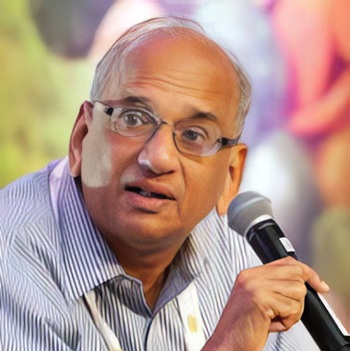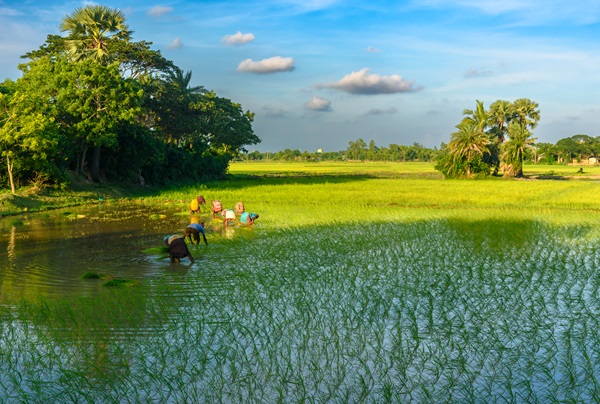.png)

Chandrashekhar is an economist, journalist and policy commentator renowned for his expertise in agriculture, commodity markets and economic policy.
July 3, 2025 at 12:49 PM IST
This year, the southwest monsoon covered India by June 29, slightly ahead of the normal date, according to the India Meteorological Department. Early onset of monsoon has encouraged farmers to commence planting at a brisk pace. Acreage numbers of major crops as of June 27, bear this out – 26.2 million hectares as compared with 23.5 million hectares this time last year.
Planted area for rice, pulses, coarse cereals and oilseeds has increased.
Yet, there are concerns. In terms of meteorological subdivisions, as of July 2, rainfall in Bhar at -37%, Marathwada at -36% and Rayalaseema at -37% is in deficient category. The good news is that July usually witnesses heaviest rainfall and one can hope the deficit is wiped out.
These are early days though. One must not get carried away by the initial optimism generated by higher acreage numbers. At this stage, it would be premature to make any definitive statement about final acreage numbers for crops and production prospects. We will have to wait and watch.
What we can meaningfully do now is look at the Kharif 2025-26 production targets.
For 2025-26, the Ministry of Agriculture has fixed a production target of 168.9 million tonnes for Kharif season crops. Major crops of the season include rice, pulses, coarse cereals, oilseeds and cotton.
Pulses, oilseeds and cotton crops have faced production challenges in the last 2-3 years. Actual harvest size has fallen well short of the target, resulting in supply tightness. This has necessitated larger imports. Climate change is taking a toll on these crops.
Cotton in particular has become more vulnerable to weather aberrations. Planted area is on the decline having fallen to less than 11.5 million hectares in 2024-25 from the peak of 13 million hectares four years ago.
Last year, as compared with the production target of 35 million bales, actual production of cotton was markedly lower at 29.4 million bales as per Agriculture Ministry estimates. This year, the government has reduced the cotton production target itself to 33.9 million bales.
Cotton cultivation calls for a multipronged approach to boost productivity and production, as otherwise the country risks import dependence. From being a net exporter of cotton, India has become a net importer already in 2024-25.
For pulses, the tentative production target this Kharif season stands reduced to 7.7 million tonnes from the previous year’s Kharif target of 9.5 million tonnes. Tur or pigeon pea, urad or black matpe, and moong are the key Kharif season pulses. Production target for tur is 3.7 million tonnes, down from 4.5 million tonnes in Kharif 2024-25, for urad 1.5 million tonnes, down from 1.8 million tonnes and moong 1.6 million tonnes, down from 2.2 million tonnes.
It is a matter of concern that Kharif season pulses production has gradually fallen from the peak of 8.6 million tonnes in 2020-21 to 7.2 million tonnes in 2024-25.
No wonder, pulses imports have mounted and in fact more than doubled to well over 6 million tonnes last fiscal. In particular, availability of pigeon pea and black matpe has tightened. The import of these two pulses is allowed duty-free till March 2026 in order to bridge the supply gap. Other imported pulses include yellow peas, lentils or masur and chickpea or chana.
The pulses production targets are far from aspirational. The fact that the targets have been reduced this season raises questions about the government’s approach to boosting production. It is unclear if there are specific strategies in place to boost production, productivity and planted area. Nothing much seems to be in public domain.
As for oilseeds, groundnut and soybean are the two most important Kharif crops accounting for over 80% of oilseeds harvest. Production target for all Kharif oilseeds, including sesamum, nigerseed, sunseed and castorseed, is set at 28.4 million
tonnes, unchanged from last two years.
In the absence of any breakthrough in seed technology, our oilseed yields have stagnated at around 1100 kg per hectare. No wonder, the country is the world’s largest importer of vegetable oils, with annual import of 14-15 million tonnes valued at $13-14 billion.
There is palpable inertia in the policymaking circles to disrupt this highly risky dependence on import to the extent of about 70%.
It is a matter of comfort that the government has assured adequate availability of seeds and fertilisers this 2025-26 Kharif season. There is a move to promote the use of nano-fertilisers —nano-urea and nano-DAP; but there are questions over the efficacy.
To change the perception that there is not much empirical evidence of the efficiency of nano-fertilisers vis-à-vis conventional granular ones, the government is keen to conduct demonstrations. So far so good.
So, yet another Kharif season is upon us. There is nothing exciting to generate enthusiasm among growers and other value chain participants. The government has raised the Minimum Support Price routinely while procurement of many Kharif crops like oilseeds and pulses leaves much to be desired. Market prices are far from attractive. On current reckoning, the mood is ‘business as usual’.




